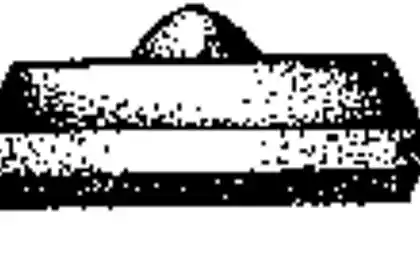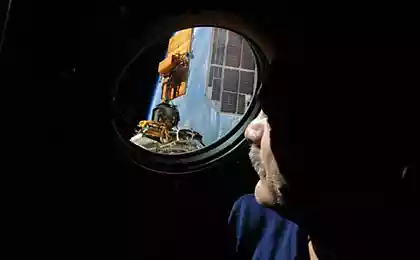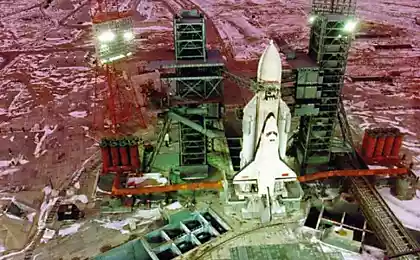198
Top 5 real traces of other civilizations on our planet
774474
For thousands of years, humanity has wondered: Are we alone in the universe? As astronomers scan the cosmos for radio signals, archaeologists continue to discover artifacts and structures on Earth that challenge our understanding of ancient civilizations. Some of these findings are so unusual that they give rise to bold theories about possible contact with extraterrestrial civilizations.
Here are five of the most mysterious archaeological evidence that may indicate the presence of other intelligent beings on our planet. Each of these artifacts is supported by scientific research and forces to rethink the history of mankind.
1. Puma Punku megaliths: technologies ahead of time

In the highlands of Bolivia, on the Altiplano plateau, one of the most mysterious archaeological complexes of the planet is located. Puma Punku, which means "Puma's Gate", is the ruins of an ancient city over 15,000 years old. But it is not the age that makes this place unique, but the incredible accuracy of the stone blocks.
Studies show that many Puma Punku stone blocks are processed to within a fraction of a millimeter. For comparison, modern machine tools with numerical control achieve similar accuracy only when using diamond cutters and computer control.
Archaeologist Arthur Poznanski, who has studied the complex for more than 50 years, noted unusual design features: blocks weighing up to 800 tons are connected by a system of slots and protrusions reminiscent of modern construction technologies. Moreover, analysis of the surface of the stones shows traces of treatment with tools that, according to experts, should leave characteristic scratches, but they do not.

2. The Baghdad Battery: Electricity in Antiquity
In 1936, German archaeologist Wilhelm Koenig discovered an artifact in the vicinity of Baghdad that turned the idea of the technological capabilities of ancient civilizations. The clay vessel, 14 centimeters high, contained a copper cylinder with an iron rod inside – a design strikingly reminiscent of a modern galvanic battery.
Experiments conducted in the laboratory of the Massachusetts Institute of technology, confirmed: when filling the vessel with acid or alkali, the device generates an electric current of about 1.5 volts.
The age of the artifact dates back to 250 BC, which means that the ancient inhabitants of Mesopotamia had knowledge of electricity 2,000 years before the official “invention” of electricity by Alessandro Volta. Moreover, near the find were found small silver objects with traces of electrolytic coating – a technology that is considered an achievement of the XIX century.
3. The Antikythera Mechanism: An Ancient Computer
Off the coast of the Greek island of Antikythera in 1901, sponge divers discovered the wreckage of an ancient ship with an amazing cargo. Among the amphorae and statues was found a corroded mechanism, which experts for a long time could not identify. It was not until the 1970s that X-ray analysis revealed the true nature of the find.
The Antikythera mechanism turned out to be a complex astronomical calculator capable of predicting the movement of planets, phases of the moon and even solar eclipses. The device contained at least 37 bronze gears and was the first known analog computer in history.
Radiocarbon dating showed that the mechanism was created in the II century BC. The level of technological complexity is so high that similar devices appeared in Europe only in the XIV century. Professor Michael Wright of the London Museum of Science spent 20 years creating a working copy and came to the conclusion that the ancient Greeks had knowledge of celestial mechanics, which was considered lost before the Renaissance.
4. Dendera Zodiac: a star map of impossible accuracy

In the temple of Hathor in Dendera, Egypt, on the ceiling of one of the halls carved amazing astronomical map known as the Dendera zodiac. This 2.5-meter-diameter bas-relief contains images of constellations, planets and astronomical phenomena with an accuracy that amazes modern astronomers.
French mathematician Jean-Baptiste Biot conducted a detailed analysis of the zodiac and found that the map shows the positions of stars and planets with an accuracy that was achieved by European astronomy only in the eighteenth century. Moreover, the zodiac records astronomical events that occurred in various historical periods spanning millennia.
Analysis of the precession of the equinoxes reflected in the zodiac shows that its creators were aware of the 26,000-year cycle of “swinging” of the Earth’s axis – a phenomenon that was rediscovered by Hipparchus only in the second century BC.
5. Sacsayhuaman: a fortress of megaliths
167685
On the outskirts of Cusco, the ancient capital of the Inca Empire, stands the monumental fortress of Sacsayhuaman. This cyclopean structure consists of stone blocks weighing up to 200 tons, which are adjusted to each other with such accuracy that it is impossible to put a knife blade between them.
According to the chronicles of the conquistadors, the Incas claimed that the fortress was built long before their civilization by "giants" or "viracoches" - light-skinned bearded creatures who taught the ancestors of the Incas various arts. Geological studies show that the lower tiers of the fortress are much older than the upper ones and are made in a completely different technique.
Civil engineer Christopher Dunn, who studied the methods of stone processing in Sacsayhuaman, concluded that many blocks bear traces of machine processing. The surfaces of some stones have characteristic grooves and protrusions that could only be created with the help of high-tech equipment.
How to independently investigate mysterious artifacts
Study the primary sources: Always refer to original scientific publications and reports of archaeological expeditions. Avoid sensational interpretations without scientific justification.
Analyze the dating: Pay attention to the methods of dating artifacts. Radiocarbon analysis, thermoluminescence and other methods yield varying degrees of accuracy.
Compare it with context: Consider the findings in the context of other artifacts from the same era and region. Isolated objects require more thorough inspection.
Explore alternative theories: Discover various hypotheses to explain the mysterious artifacts, including both conventional and alternative versions.
It's important to remember: Science requires skepticism and verifiability. Even the most mysterious artifacts must be studied in accordance with scientific methodology.
Conclusions: between science and mystery
The presented artifacts really pose difficult questions to science. Each of them demonstrates technological capabilities that seem incredible for their time. However, it is important to remember that the absence of an explanation within the framework of modern knowledge does not necessarily mean extraterrestrial origin.
Perhaps our ancestors possessed knowledge and technology that was lost as a result of catastrophes or changes in civilizations. Or maybe we underestimate the ingenuity and ability of ancient cultures. One thing remains the same: these mysterious artifacts continue to expand our understanding of the past and remind us that human history is full of unsolved mysteries.
Glossary
megalith
Large stone structure or its element, created in antiquity without the use of binder solutions
electroplating
Electric current source based on chemical reaction between metals in electrolyte
precession of equinoxes
Slow shift of the spring and autumn equinoxes to the apparent annual motion of the Sun
Radiocarbon dating
Method for determining the age of organic materials from the content of radioactive isotope carbon C-14
Cyclopic masonry
A method of building from huge stone blocks without using mortar, named after the mythical cyclops
viracocha
In Inca mythology, the creator deity was depicted as a light-skinned bearded man who taught people various arts.
Thermoluminescence
A method of dating ceramics and other materials based on the measurement of light emitted when heated
astronomical calculator
Mechanical device for calculating the position of celestial bodies and predicting astronomical phenomena
Square Descartes: how to restore order in the head and overcome laziness
8 Healthy Lifestyle Ideas That Are Easily Included In Your Schedule























